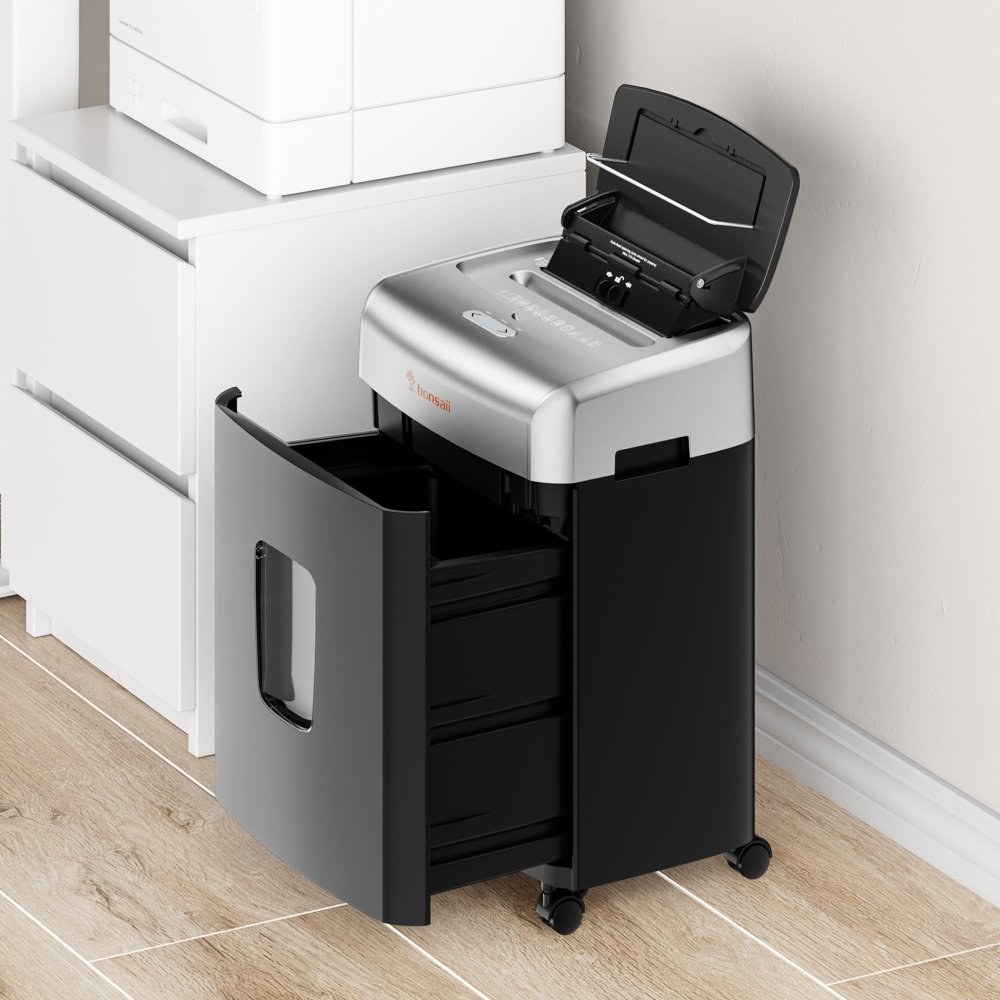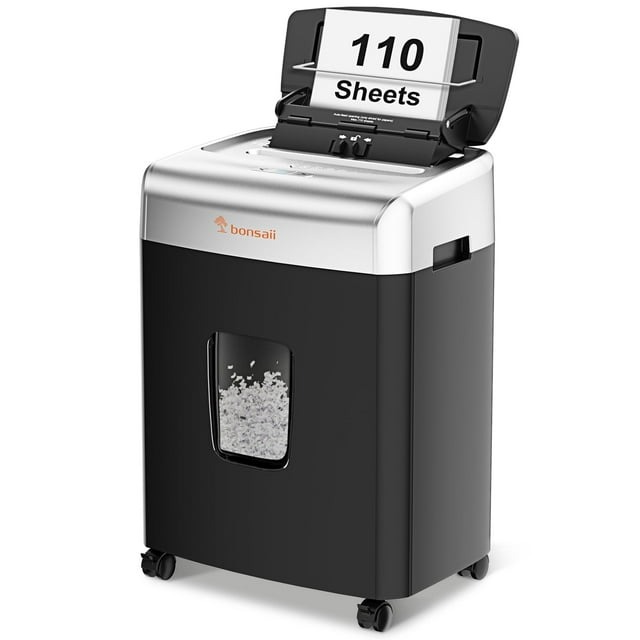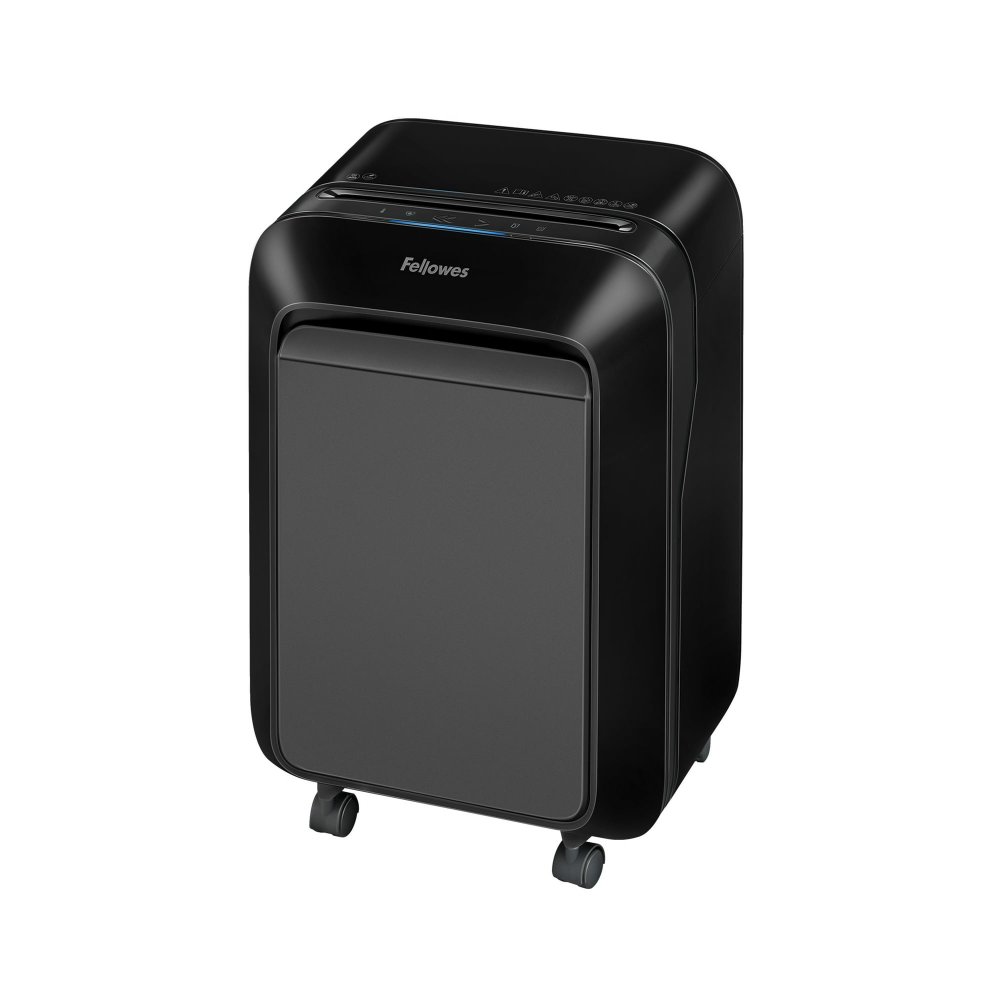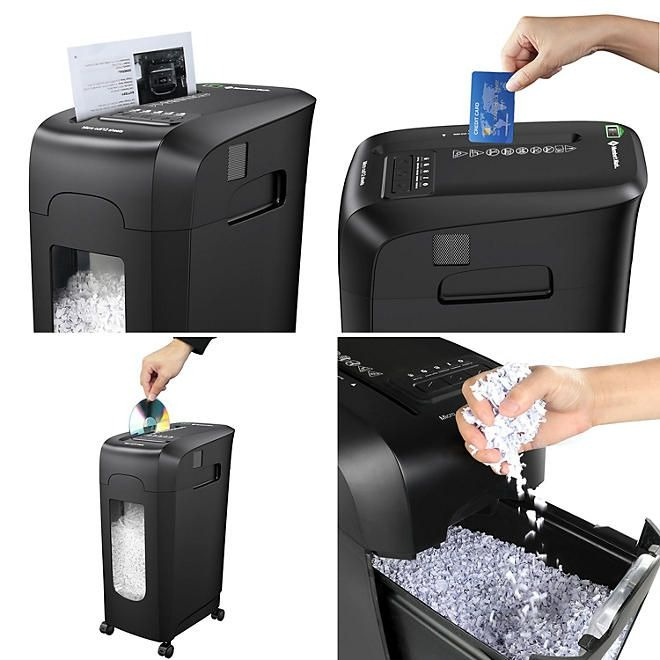Different Types of Paper Shredders
Selecting the right home office paper shredder requires understanding the different types available. Each type offers unique features and levels of document security. Here’s a brief overview of the key options to consider.
Strip-Cut Shredders
Strip-cut shredders slice documents into long, narrow strips. They can handle high volumes and are typically more affordable. However, they offer the least security, as the strips can be reassembled.
Cross-Cut Shredders
Cross-cut shredders provide more security than strip-cut models. They cut papers horizontally and vertically. This makes the shreds smaller and harder to piece back together. They are ideal for shredding confidential documents.
Micro-Cut Shredders
For those needing the highest security, micro-cut shredders are the best choice. They turn paper into fine particles, virtually impossible to reconstruct. This level suits sensitive information and helps comply with privacy regulations.
Cardboard Shredders
Cardboard shredders are specific to packaging materials. They are less common in home offices unless your business creates frequent shipping waste.
Auto-Feed Shredders
Auto-feed shredders are convenient for busy home offices. You can stack a pile of papers, and the machine will feed them in automatically.
Specialty Shredders
Some shredders handle more than paper. They can destroy CDs, credit cards, and even clips. These are versatile and useful if you require multi-media destruction.
When choosing a home office paper shredder, consider how much you will shred, the security level needed, and whether you’ll need to shred materials other than paper. Matching your specific needs with the right type of shredder will ensure efficient and secure document management.

Factors to Consider When Choosing a Shredder for Home Office
When setting up your home office, a reliable paper shredder is vital for managing confidential waste. Beyond the different types of shredders, several factors need consideration to find the perfect match for your needs.
Volume of Paper to Shred
Consider the amount of paper you expect to shred. A small office with limited paper waste might do well with a personal shredder. If you handle more documents, look for a shredder that supports higher volumes without overheating.
Level of Security Required
The sensitivity of your documents should dictate the security grade of the shredder. For basic documents, a strip-cut shredder may suffice. For confidential papers, a cross-cut or micro-cut shredder offers enhanced security.
Shredding Speed
How quickly do you need to shred documents? Busy home offices would benefit from a faster shredder. This helps manage time effectively and keeps workflows moving.
Manual vs. Auto Feed
Do you have time to feed paper manually, or do you prefer stacking papers for automatic shredding? Auto-feed shredders save time, allowing you to focus on other tasks.
Shredding Additional Materials
Will you need to destroy items beyond paper? Some shredders also handle credit cards, CDs, and small clips. Choose a shredder with the ability to tackle multiple materials if necessary.
Size and Storage
Space is often at a premium in home offices. Consider the size of the shredder and how it will fit within your existing setup. Compact shredders are good for tight spaces but might lack some features of larger models.
Choosing the right home office paper shredder involves considering these practical aspects. Match your specific requirements with a shredder’s features to ensure a smart buy for your home office.

Security Levels in Paper Shredding
When choosing a home office paper shredder, it’s critical to understand the different security levels. These levels are based on how finely a shredder cuts documents. Let’s break them down:
P-1: Basic Security
This level is the lowest and typical for strip-cut shredders. It’s suitable for general documents with no sensitive information.
P-2: Slightly Higher Security
Moving up, P-2 provides a bit more security. It’s still not for confidential documents but adds an extra layer over P-1.
P-3: Standard Security Level
P-3 is often met by cross-cut shredders. This level is for home offices needing to protect personal data.
P-4: Good Security
Here, most micro-cut shredders fall in. It’s for sensitive documents, ensuring they are difficult to piece together.
P-5: High Security
P-5 shreds even finer, meeting the standards for safeguarding classified information.
P-6: Very High Security
Rare in home offices, P-6 is about top-notch security measures, typically for government use.
P-7: Maximum Security
The highest level, P-7, is for highly confidential materials requiring the highest safeguarding.
Match the shredder’s security level with the sensitivity of your documents to ensure adequate protection. Whether you’re discarding daily office papers or classified materials, picking the right level is vital for your home office paper shredder.
Top Features to Look for in a Home Office Shredder
When seeking the best home office paper shredder, certain features stand out as essential. Let’s explore the top ones that should guide your decision:
Jam-Proof Technology
A shredder that can prevent jams saves time and frustration. Look for models that reverse or power through overfed sheets.
Safety Features
Safety sensors that stop the shredder when hands are close are crucial, especially if children are around.
Energy Efficiency
Pick a shredder that conserves energy while in use and has an auto shut-off feature.
Quiet Operation
A shredder that operates quietly will cause less disruption, making it ideal for home office environments.
Bin Size and Accessibility
Consider shredders with larger bins to reduce emptying frequency. Also, an easy-to-access bin is a convenient feature.
Advanced Functions
Features such as auto-feed, touch-screen controls, and mobile connectivity offer added convenience.
These features not only enhance functionality but also contribute to the overall security and efficiency of your home office shredding process. With them in mind, you’ll be better equipped to select a shredder that fits your specific office needs.

The Best Home Office Shredder Brands to Consider
When searching for a reliable home office paper shredder, brand reputation matters. Trusted brands often deliver on quality, durability, and customer support. Here are some top shredder brands to consider for your home office:
Fellowes
Fellowes stands out for robust build and innovative features. They offer models with safe-sense technology and energy-saving systems.
AmazonBasics
For those on a budget, AmazonBasics shredders provide good value. They have basic, functional models suitable for low-volume shredding.
Aurora
Aurora shredders are known for their affordability and variety. They cater to different shredding needs, from light to heavy-duty.
Bonsaii
Bonsaii shredders are popular for their quiet operation. They offer cross-cut and micro-cut shredders fit for sensitive documents.
HSM
HSM offers premium, high-security shredders. They’re ideal for those who need very fine shredding for top confidentiality.
Swingline
Swingline combines user-friendliness with effective shredding. Their shredders are great for multitasking with automatic feed options.
Choosing a brand that aligns with your shredding volume, security needs, and budget is key. Check each brand’s offerings against your list of must-have features. Make sure to read reviews and compare warranties before making your final decision. Doing so ensures that you pick a home office paper shredder that serves you well over time.
Maintenance Tips for Your Home Office Paper Shredder
To keep your home office paper shredder running smoothly, regular maintenance is essential. Here are some key tips to ensure your shredder stays in top condition:
Clean the Blades
Over time, dust and paper particles accumulate on the shredder blades. Turn off and unplug your shredder. Use a soft brush or cloth to gently clean the blades. Doing this monthly will prevent jams and maintain cutting efficiency.
Oil the Shredder
Shredders need lubrication to function properly. Apply shredder oil across the entry slot. Run the shredder in reverse for a minute to spread the oil. Oiling should be done every time you empty the bin or every two months, whichever comes first.
Avoid Overloading
Never exceed your shredder’s sheet capacity. Overloading can cause jams and strain the motor. Check the manual for the maximum number of sheets allowed and stick to it.
Empty the Bin Regularly
A full bin can lead to paper backups and jams. Always empty it before it reaches the brim to ensure proper operation.
Sharpen the Blades
If your shredder handles heavy use, the blades may dull over time. While not all shredders can have their blades sharpened, consult your user guide to see if this applies to yours. If possible, sharpen them yearly.
Avoid Shredding Inappropriate Materials
Stick to shredding materials your unit is designed to handle. Avoid plastic, unusually thick paper, or metal objects unless your shredder is meant for these materials.
By following these simple maintenance steps, you can prolong the life of your home office paper shredder and ensure it performs effectively.
Balancing Cost and Quality for Home Office Shredders
Achieving the right balance between cost and quality in a home office paper shredder is key. Here are important points to consider:
- Assess Your Budget: Determine how much you are willing to spend. Shredders come in a range of prices.
- Invest in Security: Do not compromise on security for price. Micro-cut shredders offer top protection.
- Check for Features: Some features are worth the extra cost. Look for jam-proof and energy-efficient models.
- Read Reviews: Product reviews often reveal the shredder’s long-term value and reliability.
- Consider Brands: Renowned brands might be pricier but often ensure better durability and customer service.
- Evaluate Long-Term Costs: Cheap shredders may need more frequent replacements or repairs.
Choose wisely between upfront costs and long-term investment. A slightly higher initial price can lead to savings in maintenance and replacement. Ensure the shredder meets your home office needs for a valuable purchase.
Disposal of Shredded Documents: Best Practices
After shredding, knowing how to discard the remains is vital. Managing shredded paper helps maintain security and supports recycling efforts. Here are effective practices for disposing of your home office paper shredder output:
Recycling Shredded Paper
Most shredded paper can go into the recycling bin. Check your local recycling rules as some require shredding in clear bags. Recycling is good for the planet and often required by law.
Composting Shredded Paper
Shredded paper makes excellent compost material. If it’s not inked with harmful chemicals, add it to your compost pile. This helps reduce waste and nourishes your garden.
Using Shredded Paper for Packing
Use shredding as filler when shipping items. It cushions goods and reuses waste. Ensure sensitive data is sufficiently destroyed before this use.
Burning Shredded Paper
If permitted, burning is an option. Do this safely in a fire pit or incinerator. It’s immediate but check environmental regulations first.
Secure Disposal Services
For highly sensitive documents, hire a secure disposal service. They ensure shredding fragments are handled correctly. This adds an extra layer of security to your shredding process.
Proper disposal of shredded documents is as crucial as the initial shredding. By following these guidelines, you protect sensitive information from misuse and contribute to environmental sustainability. Always dispose of your shredded paper responsibly, regardless of the chosen method. Make it a habit to destroy and discard documents safely, aligning with the functions of your home office paper shredder.
